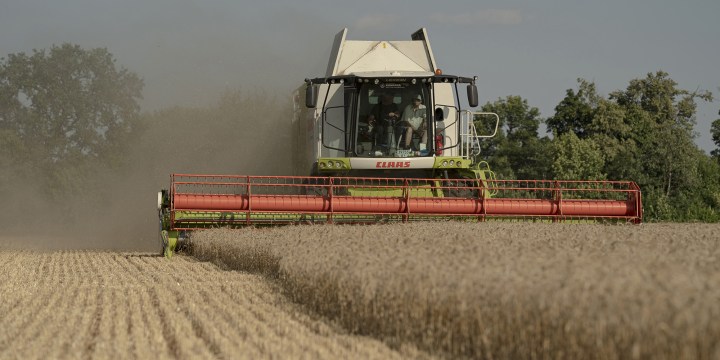AGRICULTURAL MARKETS OP-ED
Global grain supplies are ample, but we must watch India and Russia

Russia’s refusal to renew the Black Sea Grain Deal and India’s ban on rice exports present a risk to the gains we were all starting to enjoy from the slowing grain prices, specifically in the major importing regions.
Ok, folks, a lot has happened in the agricultural markets over the past few weeks. First, Russia decided not to renew the Black Sea Grain Deal, which is essential to facilitating exports out of Ukraine and has contributed to a decline in global grain prices.
Second, India banned the exports of non-basmati white and broken rice owing to inflation fears.
Both these events have been quite disruptive to the grain trade. A few days before these announcements, I wrote a piece mainly distilling the 2023/24 global grain production forecasts, which I felt were solid. I still do.
I feel the need to post the article here as its core message is that there are a lot of grains and oilseeds in the world. So, we see the price reaction mainly because of the events I mentioned above, not the tight supplies.
On 12 July 12, 2023, the US Department of Agriculture (USDA) released its monthly flagship report, the World Agricultural Supply and Demand Estimates. The report’s focus has shifted from the 2022/23 season to the 2023/24 season, currently under way in the northern hemisphere and starting around October in the southern hemisphere.
Positive picture
The past few weeks, particularly in the US, brought drier weather conditions, leading to fears of a potential downward revision in the crop forecasts. But the latest estimates still present a positive picture of the 2023/24 global agricultural prospects.
For example, the 2023/24 global wheat production is forecast at 797 million tonnes, up 1% from the previous season. The larger harvest is anticipated in the EU region, the US, Canada, China, India and Turkey. As a result of the expected large harvest, the 2023/24 season’s global maize stocks could increase by 1% year-on-year to 270 million tonnes.
Moreover, the USDA forecasts 2023/24 global maize production at 1.2 billion tonnes, up 6% from the previous season. The countries underpinning this improvement in production are the US, Brazil, Argentina, China and the EU region.
Regarding South America, the El Niño weather event will present a much-needed change of a prolonged four years of below-average rain during a La Niña event. (The El Niño event has the opposite effect in southern Africa, it brings below normal rainfall, while La Niña of the past four seasons presented above normal rainfall and supported agriculture in the region). The ending stocks could also increase by 6% to 314 million tonnes in the 2023/24 season because of the expected robust harvest.
Another important staple crop is rice, whose 2023/24 global harvest is estimated at 521 million tonnes (slightly below the 524 million tonnes estimate by the International Grains Council). This is up by 2% from the previous season. Vietnam, Thailand, the US, Pakistan, China, Indonesia, Bangladesh, the Philippines and Brazil are the key drivers of this increase in the global rice harvest. Because of the solid consumption, the global stocks could remain roughly unchanged from the previous season at around 170 million tonnes.
Moreover, the 2023/24 global soybean crop is estimated at 405 million tonnes, up 10% from the previous season. The significant recovery in South America’s soybean harvest after a few years of drought and an expected large harvest in the US, Brazil, Argentina, China, Russia, Ukraine and Uruguay are the main drivers of the expected large global soybean crop. Importantly, the 2023/24 global soybean stocks could increase by 18% from the previous season to 121 million tonnes.
While we are still early in the season, and a lot could change depending on the weather conditions over the coming weeks and crop development in the southern hemisphere when the season starts, the current prospects are positive. If this optimistic crop production materialises, we could see a recovery in the global grain and oilseed stocks, adding downward pressure on the prices.
This would mean a continuation of the already slowing price environment we have observed since the start of the year in the FAO’s Global Food Price Index.
Challenges
The major upside risk currently is the ban on India’s rice exports. India is an important global agriculture player, accounting for more than a third of global rice exports. Therefore a ban on such export volume adds upside pressure on prices and limits the gains of the large global harvest by slowing prices to a consumer.
Another challenge is the Kremlin’s decision to halt the Black Sea grain deal, brokered by the UN and Turkey to combat a global food crisis. Now, one has to appreciate that the major contributor to the slowing global agricultural commodities prices (food prices) is the Black Sea Grain Deal, which has allowed for a safe grain movement from Ukraine and Russia since July 2022.
Russia’s refusal to renew the Black Sea Grain Deal presents an upside risk to global grain prices, which may undermine the gains we were all starting to enjoy from the slowing grain prices, specifically in the major importing regions.
Overall, we also need to consistently monitor the crop conditions in the southern hemisphere when the season starts in October. A big part of the positive global crop production forecast assumes a recovery in South America’s crop conditions. But this will only be observable towards the end of the year. The current optimism is mainly based on favourable weather forecasts.
The USDA’s recent World Agricultural Supply and Demand Estimates present a comforting picture of global food price direction, but the risks we outlined in India and Russia and weather aspects in South America will need consistent monitoring.
All else being equal, the world is far better than last season regarding food supplies. The movement of the supplies to various areas of consumption, however, is another discussion, as Russia and India’s interventions continue to present risks.
Wandile Sihlobo, the chief economist at the Agricultural Business Chamber of SA (Agbiz) and senior lecturer at Stellenbosch University’s Department of Agricultural Economics, is the author of Finding Common Ground: Land, Equity, and Agriculture.



















 Become an Insider
Become an Insider
Comments - Please login in order to comment.